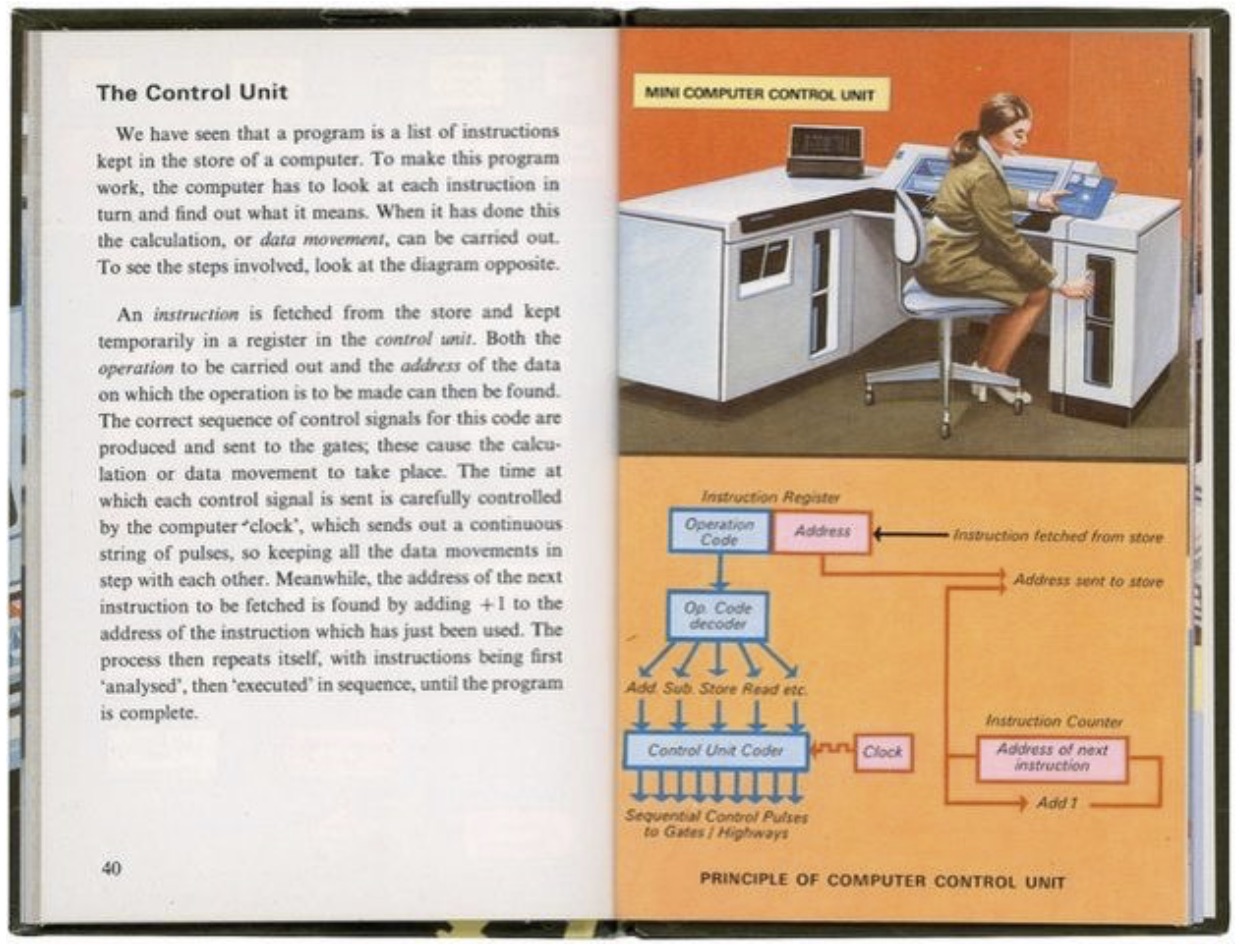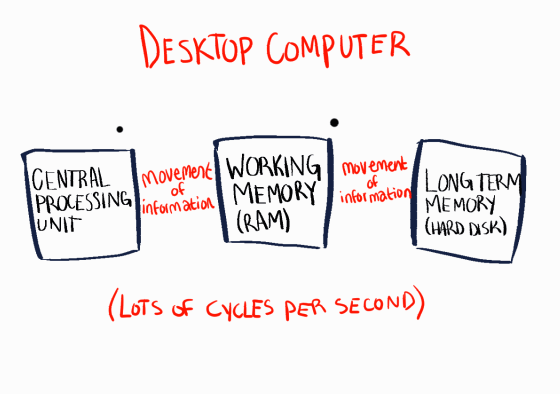A nifty way the brain could have worked (but doesn't)
Through the ages, we have tended to use the technological system of the day to understand how the brain works. From water flows to clocks; from steam engines (think of Freud’s boiling instinctual Id barely contained by the Ego) to telephone switching networks; to the most dominant metaphor since the second half of the 20th century, the digital computer
Let’s stay with the computer for a bit. It’s worth reminding ourselves how the digital computer works, because it’s been influential in shaping many ideas in psychology on how the mind works. And because the brain doesn’t work this way.
Indeed, thinking of the brain as a desktop computer has been pretty misleading.
Here’s how Ladybird books explained the operation of the computer, back in 1979. (Note, since then, computers have become a fair degree smaller. Both the computer and the woman, called Alexa, now fit inside a phone).

The digital computer has general processing mechanisms, in the sense that the same mechanisms process any kind of content. There’s a hard drive that stores any kind of knowledge. There’s a working memory (or RAM) in which information is held temporarily, then it’s fed to the central processing unit (CPU). The CPU is a specialist calculating device. It carries out the calculations and hands back the results to working memory, which can then store them back on the hard drive. The CPU can do calculations on any kind of knowledge because of abstraction: the details are converted into logical structure. Put all knowledge in a common format, use the same mechanism to process it. To the CPU, the calculations are all the same, whether it is processing images or numbers or the results of keyboard presses or touchscreen swipes or joystick twitches.

Because of the way it is constructed, then, a digital computer relies on abstraction and fast movement of knowledge between general-purpose processing mechanisms. If you want a computer that is better at processing photographic images, or a computer that is better at processing music, or a computer that is better at controlling a robot arm, the choice would be the same: go to a shop and buy a computer with a CPU that can do more calculations per second, has more working memory, and a larger hard disk.
This principle – use abstraction to turn all knowledge into the same format then process all knowledge with the same general purpose processing mechanisms – turns out to be the exact way that the brain doesn’t work.
Computers and brains are not completely unrelated. They do both use electrical signalling. So that’s nice.